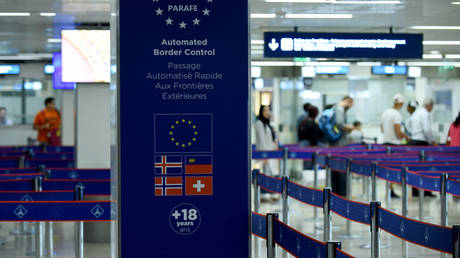Researchers develop a rewritable paper coating that encrypts sensitive data using only WATER

(Natural News) Chinese researchers have developed a special kind of paper coating that allows invisible messages to be written on it with water. The messages are visible only under ultraviolet (UV) light and can be erased by heating the paper.
In a paper published in the journal Matter, the researchers described how invisible messages can be printed on a specially coated paper using a water-jet printer and then erased with a blow dryer or heat gun. This allows each sheet of the paper to be reused for at least 30 print and erase cycles.
Printing with water, on special paper
The method developed by the researchers uses normal paper. But to allow invisible messages to be printed, the team developed a special manganese-complex coating for the paper that reacts with water.
“We used to regulate organic materials’ photoluminescence properties through modifying the molecular structure,” said senior author Qiang Zhao, of the Nanjing University of Posts and Telecommunications. “But recently we discovered that it only needs an external stimulus to change its optical or electrical properties. We developed a rewritable security printing method by utilizing the photoluminescence responses of manganese complex to water.”
The new rewritable invisible printing paper provides several advantages over existing security ink technology. For one, it’s rewritable – most security inks in use today cannot be erased after they’ve been used. Any confidential information printed with them can be easily seen by anyone who knows how. But with the method created by these researchers, any confidential information can be permanently destroyed just by heating it with a blow dryer for 15 to 30 seconds.
The reusability of the paper also helps reduce the cost of using the method.
“The rewritable feature significantly reduces the cost. The cost per print is estimated to be RMB0.014 ($0.002),” Zhao said. “Most fluorescent security inks on the market used to record confidential information are environmentally unfriendly and cannot be erased. The paper is only a disposable recording medium.”
More secure printing developments on the way
Though the specially coated paper and water-jet printing method developed by the researchers promises to be both cost-efficient and environmentally safe, they are looking to further improve the process.
Currently, the messages printed on the specially coated paper appear only when excited by a specific short-wavelength, 254 nm UV light. This type of UV light is still harmful to humans.
“Our work is to provide a practical printing method. Thus, we need to make sure that it’s non-toxic or has low harm to the human body,” Zhao explained. “That’s why we use manganese complexes, which are environmentally friendly and low in toxicity.”
In addition, the fact that the method still uses UV light – commonly used for similar security ink applications – means that any messages can still be easily decrypted. (Related: EXCLUSIVE: The NSA is archiving all encrypted emails and transactions, knowing they will be able to decrypt most digital files in about 3 years, thanks to quantum computing.)
The researchers have also developed a higher-level security printing method. This newer method coats the paper with phosphine ligands, molecules that can grab on to manganese in the manganese halide salt solution ink to create manganese complex. This creates a message that is invisible under both ambient light and UV light.
Instead, information printed in this manner is only revealed when analyzed using a technique called photoluminescence lifetime imaging. Messages printed in this manner are safe from most general decryption methods.
“The dynamic manipulation of the emission lifetime has been achieved for the first time by utilizing the reversible ionic interactions of manganese complexes,” says Zhao. “Information security is a topic that people are greatly concerned about, especially in the economic and military fields. Therefore, the main purpose of our work is to provide a safe and practical solution.”
For more on developments in security and materials sciences, follow FutureScienceNews.com.
Sources include:


